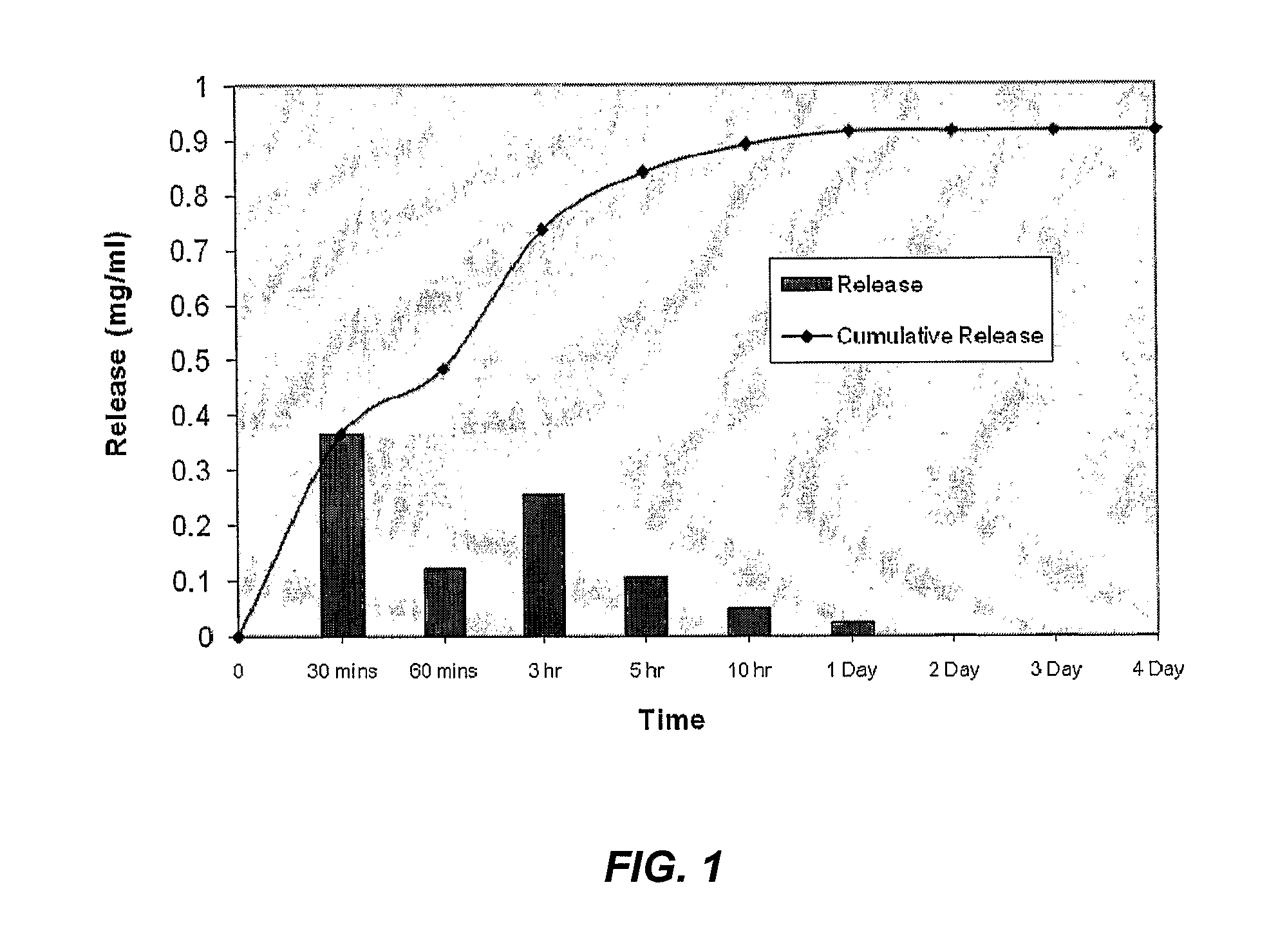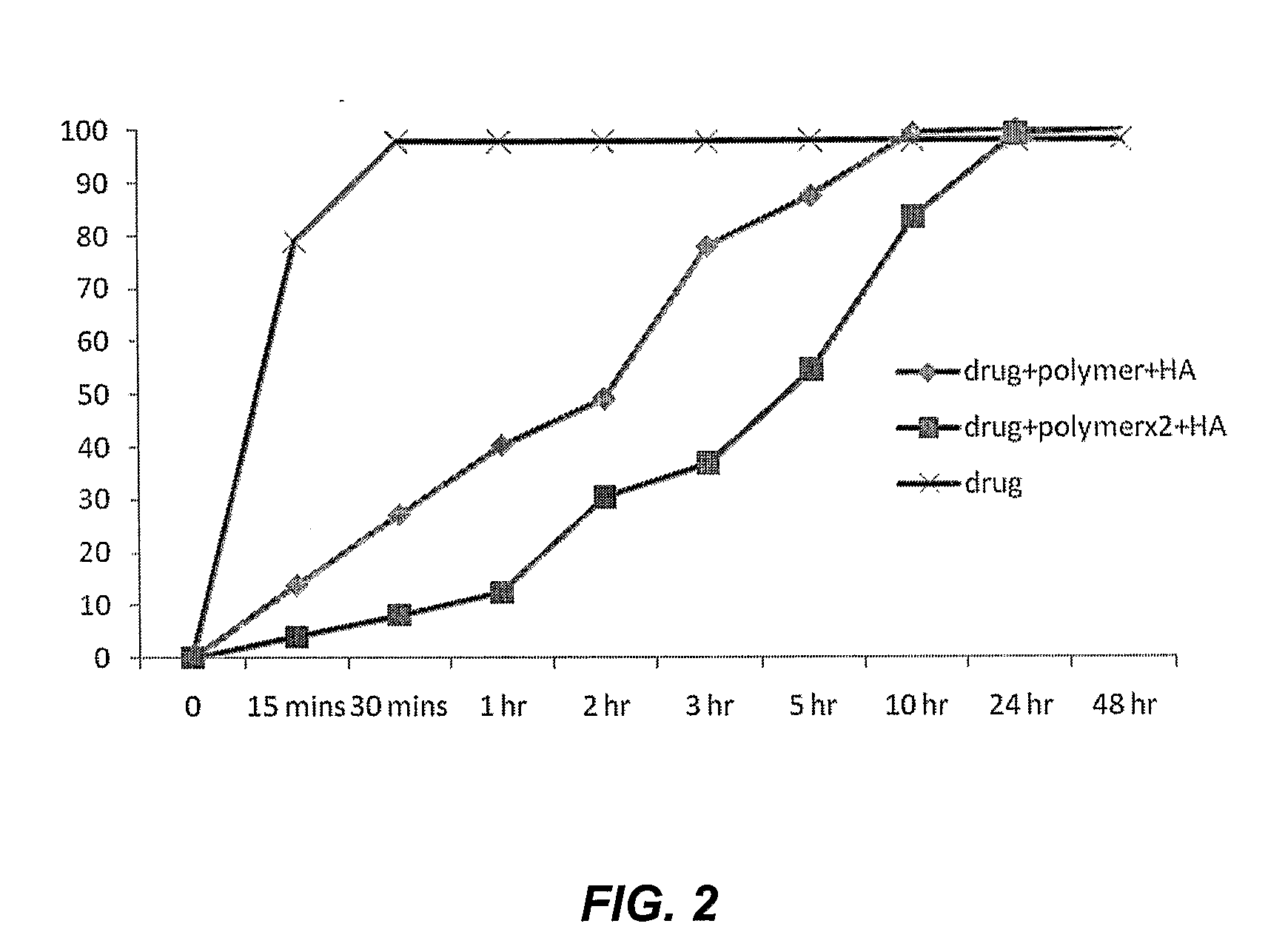Method for coating metal implants with therapeutic mixtures
a technology of metal implants and mixtures, applied in the field of treating the surface of medical implants, can solve the problems of loose implants, bone degeneration, and microbial infections, and achieve the effects of improving the surface quality of implants, improving the treatment effect, and improving the treatment
- Summary
- Abstract
- Description
- Claims
- Application Information
AI Technical Summary
Problems solved by technology
Method used
Image
Examples
example 1
[0122]This example describes the modification of an implantable titanium hip stem containing a porous beaded surface. A Summit hip stem (DePuy) with a Porocoat finish was used as the substrate. The active chosen for study was gentamicin sulphate (GS).
[0123]The stem was first coated GS by dissolving 0.6 g of GS in 10 ml of water and applying the solution to the surface drop wise. In total, 0.1575 g of GS was added to the surface. Once dry, a polymer overcoat was applied by adding a solution of PLGA (3.5 g of PLGA in 10 ml of dichloromethane) dropwise and allowing to dry The coated hip stem was then abrasively blasted as per WO2008 / 033867 to remove the outer layer of polymer. Blasting was carried out in a Comco Standard Lathe operating at a pressure of 100 psi. MCD abrasive grit (Supplied by Himed, New York) was used as the abrasive and HA (SAI, France) was used as the dopant. Each powder was fed in a separate stream at the surface at a pressure of 100 psi and with an offset distance ...
example 2
[0127]A 25 mm diameter coupon with a sintered titanium beaded surface was used as the test substrate. The titanium surface had an average pore size ranging from 200-300 microns. Vancomycin was dissolved in water to produce a solution of 0.5 g / 25 ml. 0.5 ml of this solution was then applied in droplet form to the surface of each sample coupon and allowed to dry in an oven at 40° C. This technique was repeated three times to give a total loading of 1.5 ml of the vancomycin solution per coupon.
[0128]PLGA polymer (2.5 g) was dissolved in 50 mL of dichloromethane solvent. The polymer solution was added to the surface of the drug loaded coupons in a dropwise fashion similar to that employed to deploy the drug. Again, three applications of 0.5 ml were applied to produce a single layer of polymer with sufficient time being allowed between each application to allow the solvent to evaporate.
[0129]To investigate the effect of polymer coating thickness, a second set of three PLGA solutions were...
PUM
| Property | Measurement | Unit |
|---|---|---|
| Fraction | aaaaa | aaaaa |
| Fraction | aaaaa | aaaaa |
| Fraction | aaaaa | aaaaa |
Abstract
Description
Claims
Application Information
 Login to View More
Login to View More - Generate Ideas
- Intellectual Property
- Life Sciences
- Materials
- Tech Scout
- Unparalleled Data Quality
- Higher Quality Content
- 60% Fewer Hallucinations
Browse by: Latest US Patents, China's latest patents, Technical Efficacy Thesaurus, Application Domain, Technology Topic, Popular Technical Reports.
© 2025 PatSnap. All rights reserved.Legal|Privacy policy|Modern Slavery Act Transparency Statement|Sitemap|About US| Contact US: help@patsnap.com


